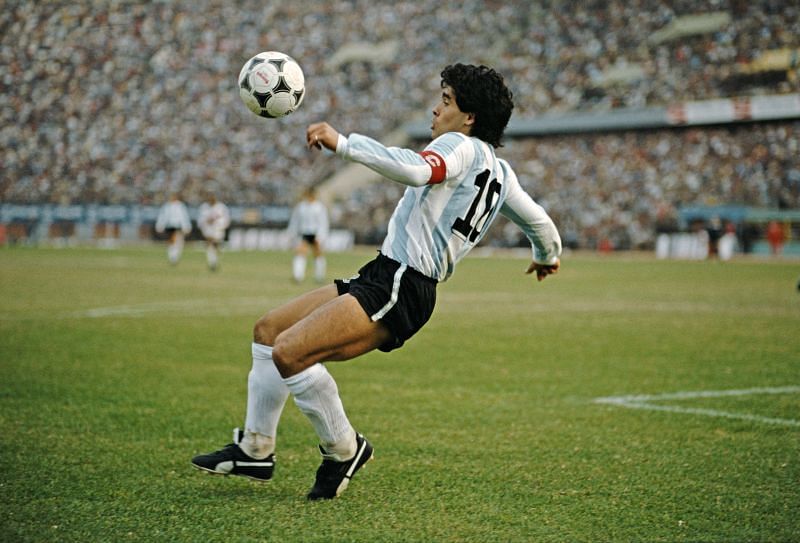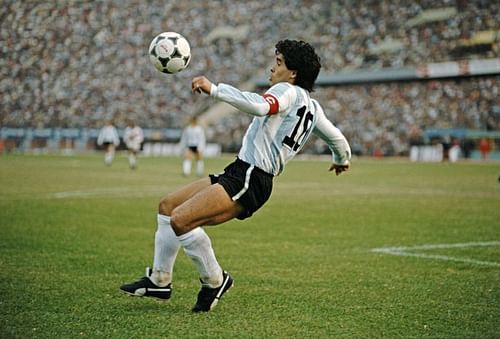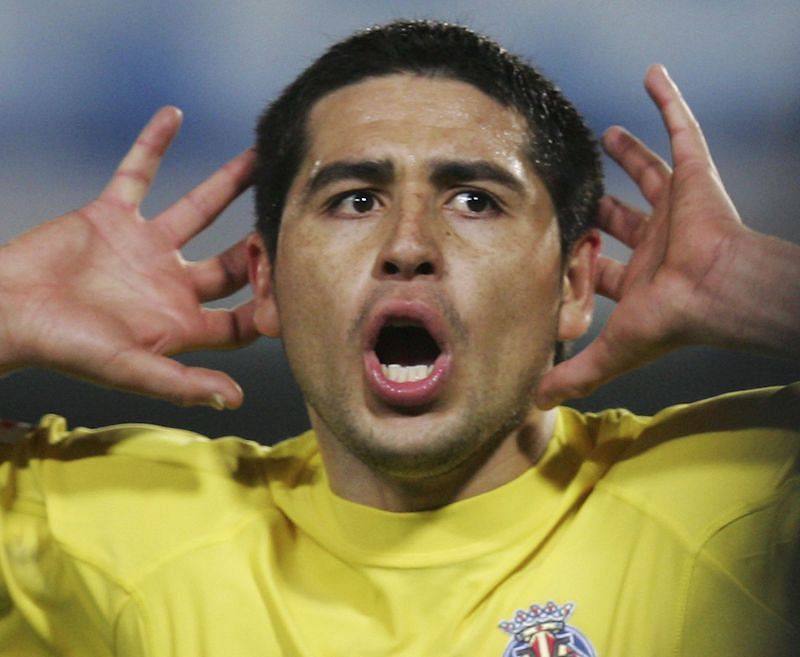
The Evolution of the Enganche: How the classic number 10 has changed over time in football

The classic Number 10 is an interesting player in the history of football. The role first came into prominence in the 1960s and especially during the 80s when Carlos Bilardo's Argentina used Diego Maradona in that role in the Albiceleste's triumph at the 1986 FIFA World Cup in Mexico.
However, Maradona was not just a creative playmaker; his vast repertoire of other skills also made him a versatile player. He could play as a second-striker, a centre-forward and also on the right-wing.
His most famous goal, the Goal of the Century against England in the 1986 World Cup quarterfinal came when he picked the ball near the centre-circle of his own half before leaving a trail of English players in his wake.
However, not all players are born with the versatility of Maradona. Some players are simply good at passing the ball and create chances for their teammates. This is where the enganche excels and comes to the fore. The player becomes the fulcrum around whom his team's play revolves.
The enganche dictates the rhythm of play and regulates the tempo of his team. But in recent times, it has been seen that this tempo can also be set by a defensive midfielder like Sergio Busquets who does it regularly for Barcelona. Many of the roles performed by the Classic Number 10 are now delegated to other players in a football team.
In a general etymological sense, enganche is a Spanish word, which when translated to English means a 'hook'. An enganche on the football field is a player who, like a hook, connects the midfield of his team with the attack. The enganche, in essence, is a midfielder, and a creative one at that. Sometimes an enganche is also referred to as the Classic Number 10.
The Enganche and the concept of 'Pause'

In life, the ability to pause gives us time to think, reflect and plan our next move. Similarly, in football, at least in the 1980s, there were moments when midfielders took the ball and paused momentarily before making a pass.
This, of course, was also possible because football was generally played at a slower pace compared to the fast-paced romp we see today. Also, methods of high-octane pressing had not yet been developed. In today's football, zonal marking and high-press are crucial defensive tactics adopted by almost every team. That was not the case back then.
Therefore, the ability to slow down helped the enganche to thrive and survive; he had the luxury of time to pick out a defence-splitting pass and make his presence known on the field. An enganche was often the most dangerous player on the pitch, destabilising opponents at will with his wide range of passing.

The former Argentina legend Jorge Valdano had this to say about the 'pause':
"In the pause, there is no music, but the pause helps to make the music."
Ezequiel Fernandez Moores wrote in a column in the Argentine newspaper La Nacion to explain the 'pause' in football:
"In South America we have the concept of the “pause” in football, the moment of reflection which foreshadows an attack. It’s built into the game, like music, which also needs pauses, drops in intensity."
Today, football is played at a much more frenetic pace than it was even a decade and a half ago. Therefore, players do not enjoy much time on the ball as they did back then.
The fast pace of modern-day football is detrimental for the enganche. However, the Classic Number 10 is also one of the most skilful players and so can often manoeuvre out of tight spaces with his skill and technique.
Why the Enganche is a dying breed in football?
The journalist Hugo Asch, who works for Perfil, once speculated about the role of the enganche and why it is often the most misunderstood position in football history. Asch says that the enganche is:
a very Argentinian invention, almost a necessity…[he] is an artist, almost by definition a difficult, misunderstood soul. – Angels with Dirty Faces, Jonathan Wilson
Part of the reason why the enganche is a dying breed in football today is that often the player's ability in attack makes him negligent of his defensive responsibilities. The number 10 has historically been a slow, ponderous player who needs a lot of protection from his more robust teammates. Besides, with the fast-paced nature of modern-day football, the enganche enjoys precious little time on the ball.
Moreover, football itself has evolved in the last few decades. This is the age when full-backs provide assists on a regular basis. It is especially true of teams like Liverpool where manager Jurgen Klopp has masterminded a system in which the two full-backs Andy Robertson and Trent Alexander Arnold, create a plethora of attacking opportunities for their forward players.
Therefore, despite not having a dedicated Classic Number 10 in their setup, Liverpool score a lot of goals and have won silverware in the form of the Champions League and the Premier League in the last two seasons.

There are also other technical issues that inhibit the enganche from thriving in today's football world. The enganche is at his best in a midfield diamond, particularly in a 4-3-1-2 system, also known as the 4-4-2 diamond system.
The enganche operates just behind the strikers, seamlessly balancing the roles of a creative midfielder and also that of an attacking midfielder, if and when necessary. However, not all teams like to employ the 4-3-1-2. Modern-day football places increased emphasis on width, and so the 4-3-3 is the most widely used formation in the game today.
Since the 4-3-1-2 is a system that makes teams very narrow in their attacking approach, it becomes easier for opponents to deal with teams employing this system. Also, footballers today have to put on a lot of defensive shift.
There was a time not too long ago when strikers only concentrated on scoring goals. But today, they need to drop deep and defend when necessary. Teams nowadays use the all-out-defence strategy where it is a common sight to see forwards keeping a two-man defensive shape ahead of two blocks of four.
Another problem with the enganche is that he almost always disbalances a system that has not been specifically designed to accommodate him. An enganche has to be the pivot, the only creative outlet for his team; the other players must revolve around his majestic creative prowess. This is the kind of role that Lionel Messi is asked to perform every time he dons the Argentina national shirt.

The fans seem to 'hate' the Enganche

In football, especially in the English game, supporters like to see hard-working players. They like to see a sense of hunger and desire in their teams; so that even when their teams lose, fans at least have the satisfaction of knowing that their players gave it their all. But that is not always the case with all players.
Let us take Arsenal's Mesut Ozil, for example. The German's time at the Emirates Stadium has been nothing short of torrid. He has never really convinced the Gunners faithful about his role and impact in the team.
It is perhaps not an exaggeration to say that Ozil is perhaps the last of the Classic Number 10s in football. Or at least, Ozil is one of the last players of his type. He shares all the characteristics of the hook player or the enganche; he is creative but slow; he does not possess a robust frame, but that does not hinder him from playing perfect through balls. Such players like the game to move at a languid pace, mirroring their own bio-rhythms.
Throughout his career, Mesut Ozil, the Classic Number 10 has shown a remarkable ability to create goals for his teammates. During his time at Werder Bremen from 2008-2010, he provided an incredible 55 assists in 108 games.
Later, in his first season at Real Madrid, the German provided 17 assists, just one shy of Lionel Messi's 18. Therefore, his contribution to the teams he has played for cannot be denied.
Perhaps the greatest disadvantage of a player like Ozil is that their shortcomings are almost always overshadowed by their contributing factors. Arsenal fans would also like to see more hard-work off the ball from a player who enjoys a weekly wage of £350,000 a week.
But they overlook the fact that Mesut Ozil does not possess those attributes that they are looking for, but he has other qualities. Besides, Ozil is no Maradona, who also scored goals on a regular basis and even helped out in defence apart from creating chances. Ozil is also not the ideal player to have on the football field when a team is trying to defend a slender lead.
All these factors make the Classic Number 10, the enganche, an eyesore to modern football fans. Once the most coveted position on a football pitch, the classic creative playmaker is slowly but surely a dying breed today.